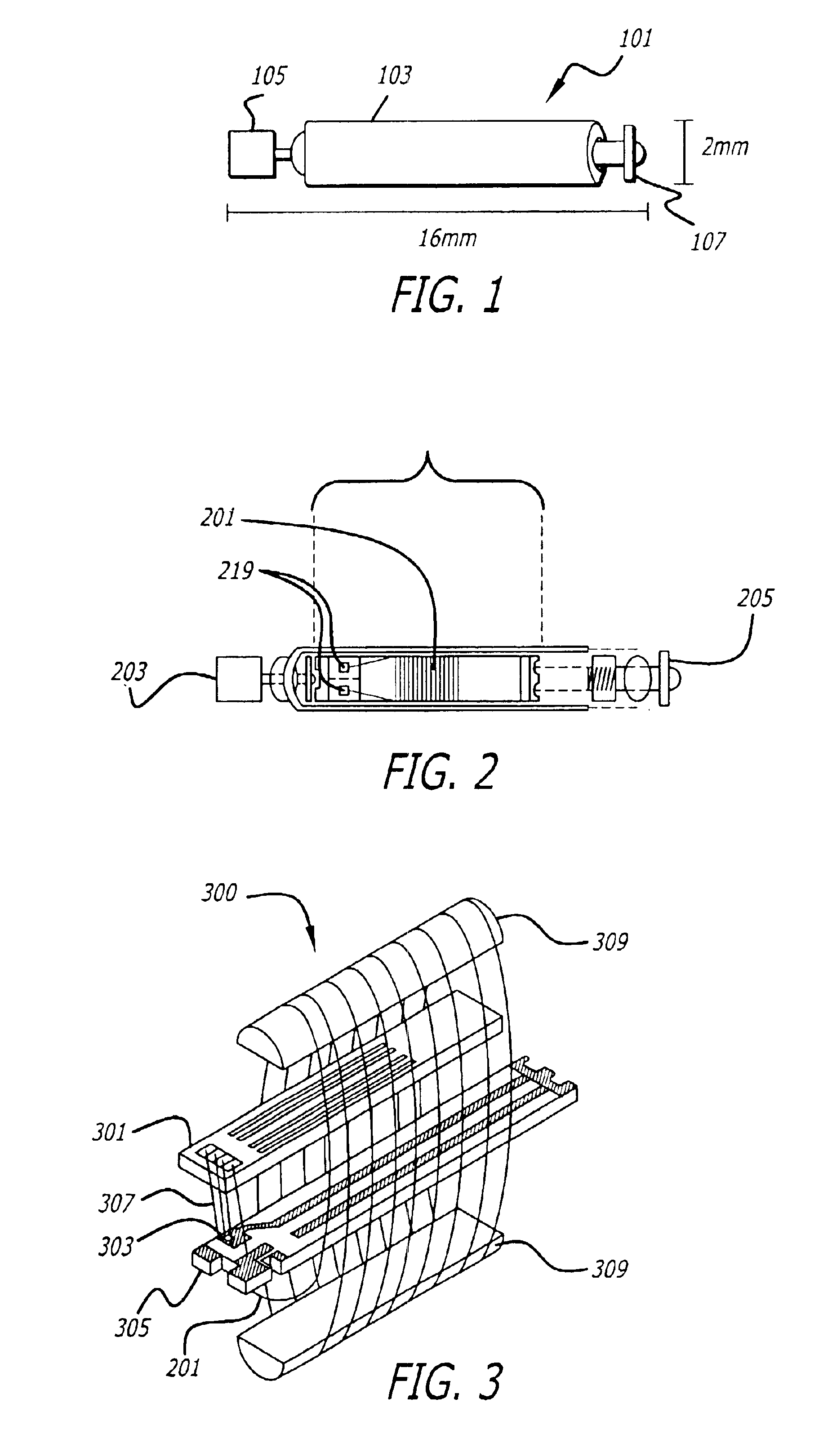Switched reactance modulated E-class oscillator design
a technology of reactance modulation and oscillator, which is applied in the direction of oscillation generator, amplitude modulation with voltage-dependent capacitor, etc., can solve the problems of significant physical limits on the general principles of power, data transmission and packaging, and stringent requirements, and achieve high resonant operation, power efficiency, and rapid amplitude modulation
- Summary
- Abstract
- Description
- Claims
- Application Information
AI Technical Summary
Benefits of technology
Problems solved by technology
Method used
Image
Examples
Embodiment Construction
[0029]In the following description of the preferred embodiments reference is made to the accompanying drawings which form the part thereof, and in which are shown by way of illustration specific embodiments in which the invention may be practiced. It is to be understood that other embodiments may be utilized and structural and functional changes may be made without departing from the scope of the present invention.
[0030]FIG. 1 illustrates a BION 101 and its typical size. Encased in a glass sheath 103 and having two electrodes, a Ta electrode 105 and an Ir electrode 107, BION 101 has a typical size of 2 mm in diameter and 16 mm in length. The small size is important, because it allows BIONs to be implanted by injection in an outpatient procedure that can be performed by any physician. Further, their small size allows them to be placed in small, deep, or hard-to-reach muscles that are impossible to stimulate selectively from the skin surface. Further, the small size and wireless natur...
PUM
 Login to View More
Login to View More Abstract
Description
Claims
Application Information
 Login to View More
Login to View More - R&D
- Intellectual Property
- Life Sciences
- Materials
- Tech Scout
- Unparalleled Data Quality
- Higher Quality Content
- 60% Fewer Hallucinations
Browse by: Latest US Patents, China's latest patents, Technical Efficacy Thesaurus, Application Domain, Technology Topic, Popular Technical Reports.
© 2025 PatSnap. All rights reserved.Legal|Privacy policy|Modern Slavery Act Transparency Statement|Sitemap|About US| Contact US: help@patsnap.com



